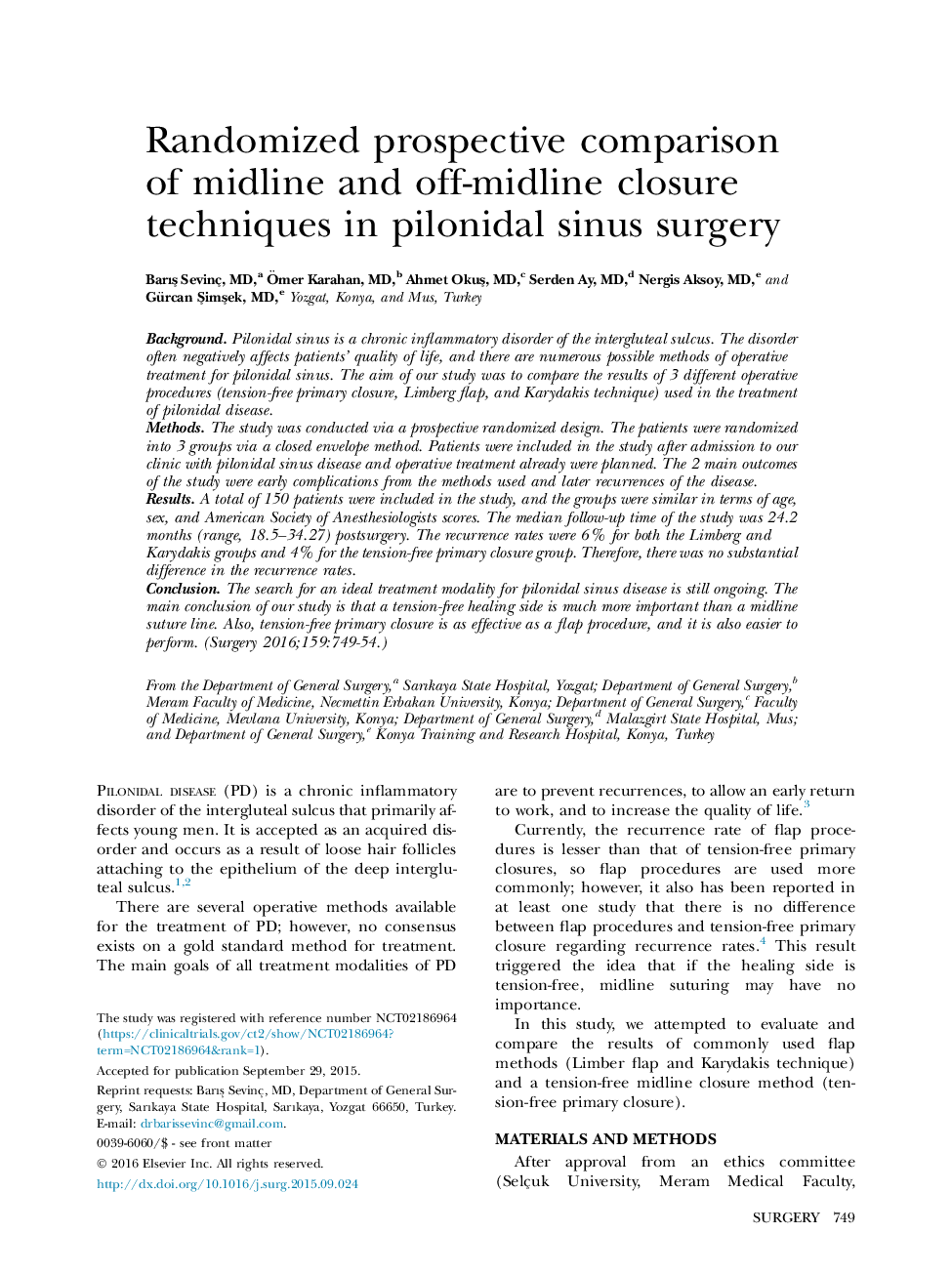| Article ID | Journal | Published Year | Pages | File Type |
|---|---|---|---|---|
| 4306805 | Surgery | 2016 | 6 Pages |
BackgroundPilonidal sinus is a chronic inflammatory disorder of the intergluteal sulcus. The disorder often negatively affects patients’ quality of life, and there are numerous possible methods of operative treatment for pilonidal sinus. The aim of our study was to compare the results of 3 different operative procedures (tension-free primary closure, Limberg flap, and Karydakis technique) used in the treatment of pilonidal disease.MethodsThe study was conducted via a prospective randomized design. The patients were randomized into 3 groups via a closed envelope method. Patients were included in the study after admission to our clinic with pilonidal sinus disease and operative treatment already were planned. The 2 main outcomes of the study were early complications from the methods used and later recurrences of the disease.ResultsA total of 150 patients were included in the study, and the groups were similar in terms of age, sex, and American Society of Anesthesiologists scores. The median follow-up time of the study was 24.2 months (range, 18.5–34.27) postsurgery. The recurrence rates were 6% for both the Limberg and Karydakis groups and 4% for the tension-free primary closure group. Therefore, there was no substantial difference in the recurrence rates.ConclusionThe search for an ideal treatment modality for pilonidal sinus disease is still ongoing. The main conclusion of our study is that a tension-free healing side is much more important than a midline suture line. Also, tension-free primary closure is as effective as a flap procedure, and it is also easier to perform.
